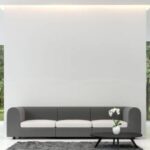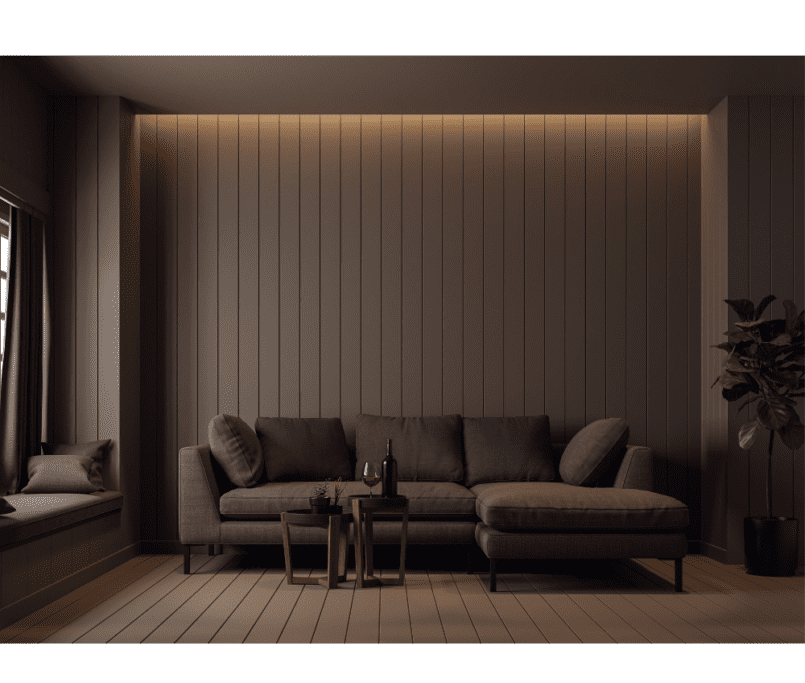Using specialized software, 3D product modeling creates a virtual representation of a physical object. The resulting digital Model can be used for various purposes, including design visualization, virtual prototyping, and product testing. Customized 3D product modeling furthers this process by tailoring the design to meet specific customer needs. In this article, we will discuss the importance of customized 3D product modeling and potential solutions to common problems that may arise.
The Importance of Customized 3D Product Modeling
Customized 3D product modeling has become increasingly important in today’s fast-paced business environment. With technological advancements, consumers expect more personalized products that meet their unique needs and preferences. By leveraging 3D product modeling, businesses can meet this demand and provide customers with customized products tailored to their requirements.
Moreover, 3D product modeling can significantly reduce the time and cost associated with traditional product design processes. By creating a virtual model of the product, designers can identify and resolve potential design flaws before the physical prototype is produced. This minimizes the need for costly revisions and enables companies to bring products to market more quickly and efficiently.
Additionally, customized 3D product modeling can help businesses stand out in a crowded marketplace. By offering unique, customized products, companies can differentiate themselves from competitors and attract new customers. This can lead to increased brand loyalty, customer satisfaction, and improved sales and revenue.
Statement of the Problem
Despite the many benefits of customized 3D product modeling, there are some common challenges that businesses may need help with when implementing this process. One potential issue is the need for more expertise and resources to create high-quality 3D models. This can be incredibly challenging for smaller businesses with limited budgets and resources.
Another potential challenge is the complexity of the 3D modeling process itself. Creating an accurate, detailed 3D model requires a thorough understanding of the product’s design, engineering principles, and specialized software and hardware. This can be time-consuming and challenging for designers who must become more familiar with the technology.
Finally, ensuring the accuracy and quality of the 3D Model is critical to the product’s success. Even minor errors or inaccuracies can result in significant design flaws that can be costly to correct once the physical prototype is created.
Potential Solutions
Despite these challenges, there are several potential solutions that businesses can consider when implementing customized 3D product modeling. One option is to partner with a specialized 3D modeling firm with the expertise and resources to create high-quality 3D models. This can help smaller businesses overcome resource limitations and ensure the final product meets their specifications.
Another solution is to invest in training and education for designers responsible for creating 3D models. This can help build expertise and ensure that designers are familiar with the latest technology and best practices in 3D modeling.
Finally, utilizing advanced software tools incorporating machine learning and artificial intelligence can help improve the accuracy and quality of 3D models. These tools can analyze data and identify potential design flaws, allowing designers to make corrections before the physical prototype is created.
Benefits of Customized 3D Product Modeling: Why Your Business Needs It
Customized 3D product modeling has become an increasingly popular tool for businesses across various industries. By creating virtual models of products, companies can make customized, personalized products that meet their customers’ specific needs and preferences.
Accuracy and Precision
One of the primary benefits of customized 3D product modeling is the accuracy and precision it provides. With 3D modeling software, businesses can create highly accurate and detailed virtual models of their products. This can help identify and resolve potential design flaws before the physical prototype is created, reducing the need for costly revisions.
Additionally, 3D product modeling can help ensure that the final product meets the customer’s exact specifications. By tailoring the design to meet specific requirements, businesses can create products that meet their customers’ unique needs and preferences.
Faster Production Times
Another benefit of customized 3D product modeling is that it can significantly reduce production times. By creating a virtual model of the product, businesses can identify and resolve potential design flaws early in the process, reducing the need for costly revisions and speeding up production times.
Moreover, 3D product modeling can help automate certain aspects of the production process, such as prototyping and testing. This can help businesses bring products to market more quickly and efficiently, improving their competitiveness in the marketplace.
Cost-Effectiveness
Customized 3D product modeling can also be cost-effective for businesses. By identifying potential design flaws early in the process, companies can reduce the need for costly revisions and minimize the risk of expensive errors or mistakes.
Additionally, 3D product modeling can help businesses save on production costs by minimizing the need for physical prototypes. By creating a virtual model of the product, companies can test and refine the design before creating a physical prototype, reducing the need for costly materials and labor.
Better Visual Representation
Another benefit of customized 3D product modeling is that it provides a better visual representation of the product. With 3D modeling software, businesses can create highly detailed, realistic virtual models of their products. This can help customers visualize the final product better and make more informed purchasing decisions.
Moreover, 3D product modeling can create marketing materials like product images and videos. By showcasing the product in a highly realistic and detailed manner, businesses can better engage potential customers and improve their marketing efforts.
Improved Customer Satisfaction
Finally, customized 3D product modeling can improve customer satisfaction. By tailoring the design to meet specific customer needs and preferences, businesses can create products that better meet the expectations of their customers. This can lead to increased customer loyalty and repeat business.
Moreover, 3D product modeling can give customers a better understanding of the product and its features. By showcasing the product in a highly realistic and detailed manner, customers can better understand its capabilities and limitations, improving their overall satisfaction.
The Process of Customized 3D Product Modeling: From Specifications to Final Product
Customized 3D product modeling is a complex process involving multiple stages, each of which is critical to the final product’s success.
Gathering Product Specifications
The first stage of customized 3D product modeling is gathering product specifications. This involves identifying the specific needs and preferences of the customer, such as size, color, shape, and functionality.
During this stage, the product designer will work closely with the customer to understand their requirements and develop a clear understanding of the final product. This may involve sketches, drawings, or other visual aids to help communicate the customer’s vision.
Creating a 3D Model
Once the product specifications have been gathered, the next stage is creating a 3D model. This involves using specialized software to create a virtual product model based on the customer’s specifications.
During this stage, the product designer will use their expertise to create a detailed and accurate 3D model of the product. This may involve multiple iterations and revisions to ensure that the final Model meets the customer’s requirements.
Reviewing and Revising the 3D Model
After the initial 3D Model has been created, the next stage is reviewing and revising the Model. This involves carefully analyzing the Model to identify potential design flaws or issues that must be addressed.
During this stage, the product designer will work closely with the customer to review the Model and make any necessary revisions. This may involve adjusting the product’s size, shape, or functionality of the product to meet the customer’s needs.
Finalizing the 3D Model
Once the 3D Model has been reviewed and revised, the next stage is finalizing the Model. This involves making any final adjustments to the design and ensuring that the Model is ready for production.
During this stage, the product designer will work closely with the customer to ensure that the final Model meets their specifications and requirements. This may involve making additional revisions or adjustments to the design to ensure it is perfect.
Delivering the Final Product
The final stage of customized 3D product modeling is delivering the final product. This involves creating a physical product prototype based on the 3D Model.
During this stage, the product designer will work closely with the manufacturer to ensure that the final product is produced to the highest standards of quality and precision. This may involve testing the product to ensure it meets all of the customer’s specifications and requirements.
Pricing and Affordability: How Customized 3D Product Modeling Can Be Affordable
Customized 3D product modeling is an innovative and personalized way to create products that meet customers’ unique needs and preferences. However, businesses may be concerned about the cost of this process and whether it is affordable for their budget.
Determining Factors for Pricing
The pricing of customized 3D product modeling can vary depending on several factors. These factors include the design’s complexity, the product’s size, the materials used, the level of detail required, and the time and resources needed to create the effect.
During the product specification stage, the product designer will work with the customer to understand their requirements and develop a clear understanding of the final product. Based on this information, the product designer will provide a quote for the project’s cost.
Comparison of Prices with Competitors
When considering the pricing of customized 3D product modeling, it is essential to compare prices with competitors. This can help businesses determine if they are getting a fair price for the services they are receiving.
While prices may vary between companies, it is vital to consider the quality of the service and the level of expertise of the product designers. A higher price may be justified if the company has a proven track record of producing high-quality, accurate, and precise 3D models.
Affordable Pricing Packages
To make customized 3D product modeling more accessible and affordable, many companies offer affordable pricing packages. These packages may include discounts for bulk orders or reduced rates for simpler designs.
In addition, some companies may offer financing options or payment plans to help businesses manage the project’s cost. This can make customized 3D product modeling more affordable for small and medium-sized companies needing more money for large upfront payments.
Industries that Can Benefit from Customized 3D Product Modeling
Customized 3D product modeling is an innovative technology that can benefit many industries. From manufacturing and prototyping to architecture and engineering, customized 3D product modeling can help businesses create accurate, precise, and personalized products that meet customers’ unique needs and preferences.
Manufacturing and Prototyping
Manufacturing and prototyping are among the industries that can benefit the most from customized 3D product modeling. With customized 3D product modeling, manufacturers can create accurate and precise prototypes of their products, which can help them test and refine their designs before mass production.
In addition, customized 3D product modeling can help manufacturers create custom parts and components tailored to their customer’s specific needs and requirements. This can help manufacturers improve their competitiveness in the marketplace by offering products that meet their customers’ unique needs and preferences.
Architecture and Engineering
Customized 3D product modeling can also benefit the architecture and engineering industries. With customized 3D product modeling, architects and engineers can create accurate and detailed models of buildings, structures, and products.
These models can help architects and engineers test and refine their designs, identify potential issues, and communicate their ideas more effectively with clients and stakeholders. In addition, customized 3D product modeling can help architects and engineers create personalized designs that meet their client’s unique needs and preferences.
Interior Design and Decor
Interior design and decor is another industry that can benefit from customized 3D product modeling. With customized 3D product modeling, interior designers can create accurate and precise models of furniture, fixtures, and other decor items.
These models can help interior designers test and refine their designs, identify potential issues, and create personalized strategies that meet their client’s unique needs and preferences. In addition, customized 3D product modeling can help interior designers communicate their ideas more effectively with clients and stakeholders.
Gaming and Animation
Gaming and animation can also benefit from customized 3D product modeling. With customized 3D product modeling, game developers and animators can create accurate and detailed 3D models of characters, environments, and objects.
These models can help game developers and animators create more immersive and engaging games and animations. In addition, customized 3D product modeling can help game developers and animators create personalized characters and environments tailored to their audience’s specific needs and preferences.
Conclusion
Customized 3D product modeling has become an increasingly important tool for businesses looking to stay competitive in today’s fast-paced marketplace. By leveraging 3D modeling technology, companies can create unique, personalized products that meet their customers’ specific needs and preferences. However, implementing customized 3D product modeling can be challenging, requiring expertise, resources, and specialized technology. By partnering with specialized firms, investing in education and training, and utilizing advanced software tools, businesses can overcome these challenges and ensure the accuracy and quality of their 3D models. Ultimately






